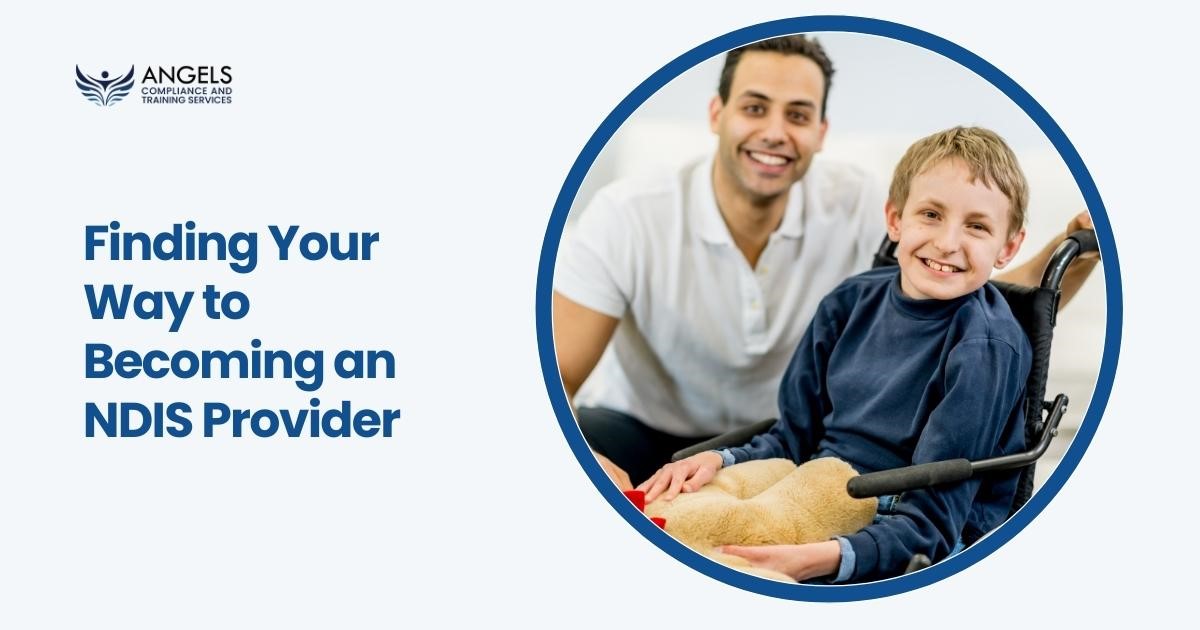
Becoming a provider for the National Disability Insurance Scheme (NDIS) is a very exciting, but daunting, journey. The process not only enables the provision of essential support services in the disability sector, but also requires a dedication to your quality delivery and compliance, in addition to person-centred support. For many who are new to, or exploring the possibility of being an NDIS provider, it can feel confusing. This blog post will demystify that process and give you what you need to take that next step confidently.
Why be an NDIS Provider?
The NDIS continues to fundamentally reshape disability support in Australia, which is empowering and exciting for participants as they are given choice and control of their support. For providers the decision to register is about more than expanding your services, it is about supporting a part of your community to have choice and control. Not only this, but the benefits of becoming an NDIS provider can include the following:
- A broader referral base: Registered providers may directly support participants through their NDIS plan (being an approved provider may lead to gaining your referrals, although this should not be the only reason to be an NDIS provider).
- Gaining trust: Being registered requires you to comply with stringent quality and safety requirements.
- Opportunities for growth: As a registered provider, you may branch out into several categories of support given your current area of expertise and growth as an NDIS provider.
- Collaboration: Joining the larger community of NDIS providers and professionals broadens opportunities for connecting with support coordinators, plan managers, family members, and allied health professionals.
Comprehending the Process of Application
The provider application process is a set process, often lengthy, which can be longer in some circumstances. Because all businesses vary you will experience each of the common steps.
Step 1: Determine Your Service
You need to determine what services you wish to deliver under the NDIS. Services can range from personal care, therapy support, Supported Independent Living (SIL), or community participation services. Defining your scope of service is the foundation for the application.
Step 2: Plan For Compliance
The provider will have to have NDIS Practice Standards and Sector Quality Indicators. This means having policies, procedures, and systems in place that will keep participants safe, staff are trained and services are delivered as they were intended.
Step 3: Complete The Application
Applications are completed via the NDIS Commission Portal. At this time, you will highlight your business details, skills and compliance documents.
Step 4: Audit
Depending on your services; an independent audit will typically need to be conducted. You may be required to either complete a verification audit (known as lower risk) or a certification audit (known as higher risk).
Step 5: Approval and Registration
After your audit is completed and reviewed, the NDIS Commission will make their final decision. If successful, you will be placed on the official register of providers and will be able to provide services.
Purpose of Audits
Audits may feel intimidating and stressful, but audits are meant to ensure providers can deliver safe quality support. The auditors examine your systems, processes and documentation, and review the operation of your business to ensure it aligns to best-practice frameworks.
Some examples of areas the auditors will look at include:
- Incident management systems
- Risk management systems
- Staff recruitment and training process
- Record keeping and privacy process
- Feedback and complaints processes
Thinking about audits as an opportunity to improve your operations instead of an obligation can assist providers when anticipating an audit.
Challenges Encountered by New Providers
It is important to note the advantages of being a provider can come with challenges, such as:
- Time and cost: It requires a significant investment in time and money to prepare your documentation, go through the audits, and maintain compliance,
- Complexity of requirements: The standards from the NDIS Commission can be complicated the first time you navigate the requirements,
- Ongoing compliance: Registration is not a one time achievement; providers need to regularly meet the ongoing expectations.
Many providers seek additional support from consultants or join industry associations and forums that support the sharing of knowledge and information.
Providing Support for Participants Effectively
The process of initiating registration is about fulfilling an obligation, but it should ultimately result in readiness to really provide support to participants. Providers need to focus on the following:
- Person-centred: Respect the goals and choices of each participant.
- Transparency: Understanding how to present costs, services, and expectations upfront.
- Flexibility: Being able to modify services as needs or circumstances change.
- Culturally aware: Understanding how to respect the varying backgrounds of participants.
- Innovative: Utilising technology and other creative responses to promote independence and inclusion.
Providing services in ways that are person-centred, transparent, flexible, culturally aware, and innovative separates providers from one another and assists in developing relationships with participants and their families.
Why Ongoing Compliance Matters
Providers are not done with their obligations once they obtain their approval. Ongoing compliance prepares and establishes strong systems, up to date policies, and regular incident reporting. Ongoing compliance means that:
- Participants continue to receive safe and quality support.
- Providers maintain alignment with evolving NDIS provider standards.
- Auditors and regulators can validate providers remaining suitable to provide services.
Failing to meet the ongoing obligations can result in sanctions or loss of approval; therefore, ongoing maintenance is essential.
Growth Potential for Providers
Registered providers often identify the potential for new growth opportunities once they are immersed in the NDIS landscape. Examples of this include:
- Expanding into service categories: For example, a provider offering daily support services may expand into community access.
- Working with other providers: Working with others enables smaller providers to provide wrap-around services.
- Utilising online platforms: Digital tools provide a way to facilitate connection with participants and simplify regulations.
- Influencing policy debate: Providers with experience are able to help shape the future of the NDIS over time.
Growth is not only about the increase of service delivery capacity but also providing an improved quality service and reputation and sustainable service delivery structure.
Renewal and Long-term Maintenance
Becoming a provider is not the end of the journey. Providers must consider the future growth and milestones that might arise, including NDIS registration renewal which ensures that they remain compliant and accountable. Renewal is also as important as registration in the beginning as providers and their organisation demonstrate an ongoing commitment to quality service and outcomes for participants.
Final Considerations
The path to NDIS registration takes preparation, persistence, and passion. Providers who approach this process with participant-first vision are not only likely to be approved and become part of the NDIS but are also likely to make positive differences.
The journey from reviewing services to undergoing audits has a significant impact on provider capacity to provide safe, inclusive, quality support. Renewal and compliance provide ongoing reminders that being an NDIS provider is a continuous obligation, not just a one-off task.
For those ready to take the leap, the process is an opportunity for growth, learning and contributing to a better, more inclusive Australia.







